




The Millioniser is a harmonica wind synthesizer, invented by Walt Miller (Walter Müller).
From the idea to the Millioniser
The Milloniser was developed in a period of 5 years before it hit the market as the “Millioniser 2000”.
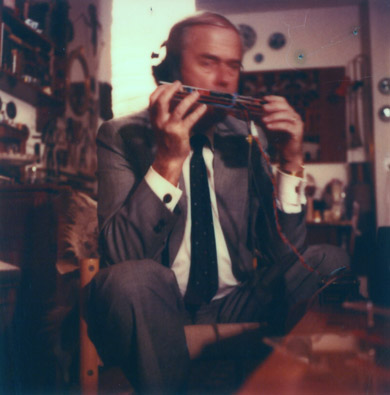
Image: The first Prototype still without a housing in 1980!
In 1979, Walter Miller together with Harald Blobel and Urs-Peter Studer developed a prototype which could control a Roland Promars analogue synthesizer. The first control unit was still quite bulky, but its functions were working exactly as expected. With this unit, the two records “Xmas and you” and “Perfidia” were produced.
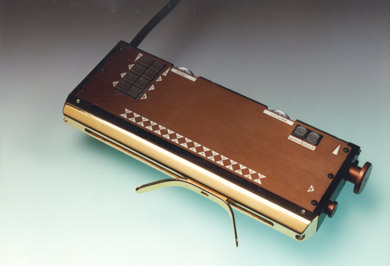
Image: The control unit designed by UP Studer in 1981
In succession, a new control unit was developed by Urs-Peter Studer. This control unit was beautiful and elegant. It was intended for the use as a controller for a Promar Synthesizer. Unfortunately, the production was very expensive and complex. Because of this, Walter Miller was looking for a funding partner, which makes a redesign with an own synthesizer possible. At the same time he was looking for an engineer with experience in musical electronics.
In 1982, Ronald Schlimme of SM Elektronik AG joined the team. The first job was to implement a standardized interface to normal synthesizers. Further, different aspects of modulating the sound had to be explored. A Roland Modular System 100M, a Moog Prodigy and different additional devices like equalizer, exiter, hall, chorus and phaser were used for this. The results were truly striking. A violinist was baffled about the authenticity while listening to Walter Miller playing on the Millioniser prototype. Similarly amazed was a trumpet player who was working as a instrument maker for brass instruments. The Millioniser can control 8 octaves or with other words, from a tuba up to a piccolo trumpet.
In 1982/83, a polyphonic controller was developed, which could control a Roland Jupiter 4 synthesizer. The results were impressive.

Image: Logo Millioniser
Finally in September of 1983, the long awaited funding of the Millioniser company in London came off.
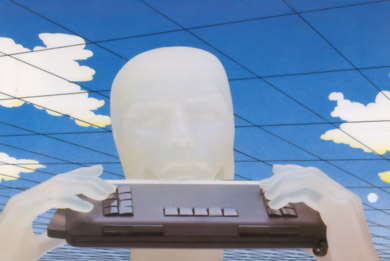
Image: The faceless society
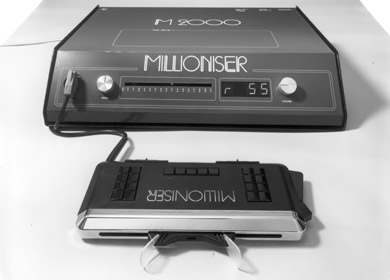
Image: Millioniser 2000
In October 1983, the development of the new Millioniser 2000 started. Everything has been redesigned. The team: Alex Bärtschi, Peter Benz, Walter Müller, Wolfi Peccoraio, Marcel Rothen, Ronald Schlimme, Urs-Peter Studer, Felix Thommen
Design, casing construction for the control unit and synthesizer, electronics, software, test software, manual, presets (sounds), prototype and production documents.
The design phase started in October of 1983 and in April 1984, four working Millionisers were presented in the Sheraton in Zurich and Hilton in Basel. From the idea to the finished product in only 5 months. Housing plastic design and zinc injection die casting were not an easy task for Urs-Peter Studer and Injecta AG.
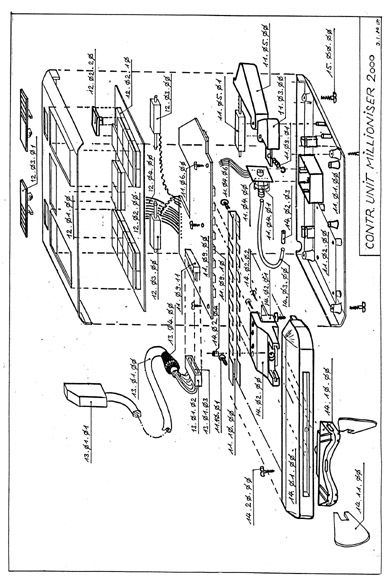
Image: Millioniser schema
Enclosure design by Walt Miller and Conran from London. The brilliant idea was to bevel the edge of the control unit, which gave it a slimmer appearance.
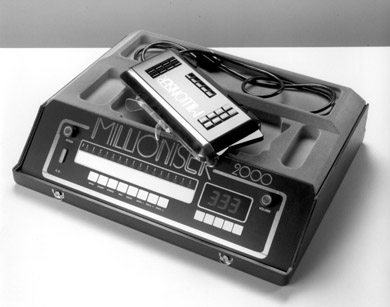
Image: The first illustrative model from November 1983 (without inner workings)
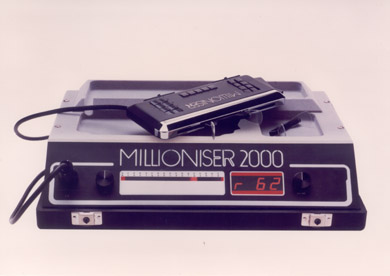
Image: One of the five working prototypes April 1984
The very first single chip microcontroller from Motorola with analogue inputs were used for the control unit. Motorola advertised these chips with the slogan: “We produce the processor; you play the music on it”. We then sent a letter to Motorola Europe in Geneva with the note “We would like to play music on the chip, but unfortunately, they are not available”. We then got plenty of support by Motorola in the form of sample chips and the head of department for single chip processors and one of the developers even came to Basel.
Alex Bärtschi was the developer of the control unit electronics and software. Alex couldn’t understand why his calculations for the optocouplers didn’t match the results he observed. Then we found out that they have a memory effect. We then inverted the logic and all of a sudden it worked like a charm. The application engineer of Telefunken (the supplier of the optocouplers) was baffled when we explained that inverting the logic works better when sampled at 3000 times a second.

Image: Rock Ericson and the first control unit still with white colour.
Ronald Schlimme was project leader and responsible for the Millioniser software and synthesizer part. The test software was written by Peter Benz and Ronald Schlimme. Everything was written in Assembler because the timing was critical.The engineering was finished in March 1984. Early in April, two presentations in the Sheraton (in front of the Sheraton in Zurich) and in the Hilton in Basel were held.
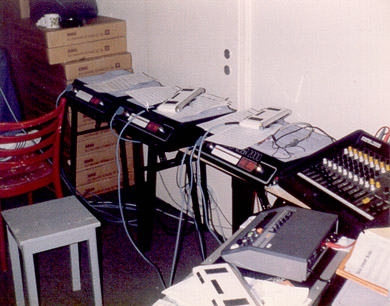
Image: The first four prototyped on Tuesday before the presentation
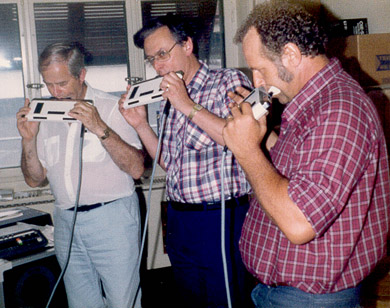
Image: They only had four days to get used to the new instrument.
Would you like to know how that have sounded? Then click here: Bagpipe (.mp3-file)
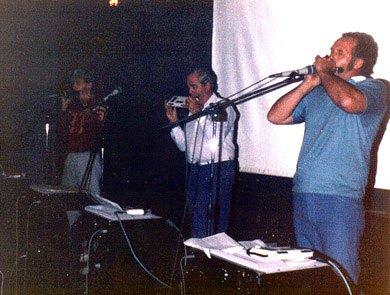
Image: This picture is taken during the presentations in the Sheraton (Zurich) and Hilton in Basel.
Nigel Molden from Millioniser Ltd London gave the introduction. You can listen to the intro here: Intro.wav (loading may take a moment).
Next is the launch: It comes from tomorrow, but it’s here today (mp3 file)
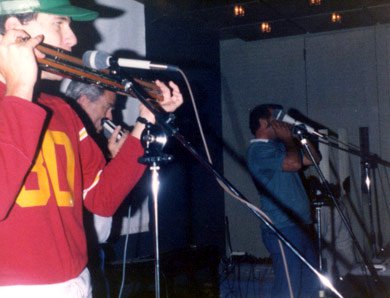
Image: Rock Ericson
Rock Ericson plays the bass guitar. Here some extracts: Feelings, Glenn Miller (mp3 files)
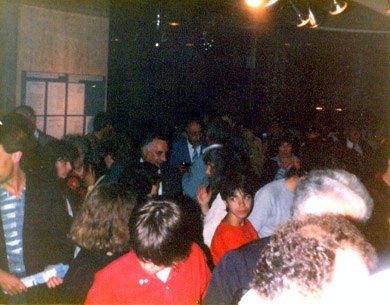
Image: We sent 800 invitations and expected around 100 visitors. To our surprise, over 400 came!
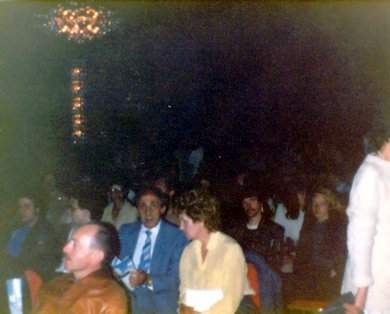
Image: The hall was very crowded and everyone eager to see what comes next.
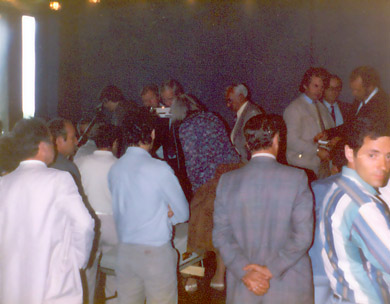
Image: After the presentation
In April, the manufacturing documents and a prototype were sent to the producer in Cardiff, Wales.
P.S.: This whole development which is more complex than a today’s PC, took only 6 month from paper to production. Nota bene, the engineering was without CAD software support. It was before the invention of the IBM-PC and the first CAD system were just released.
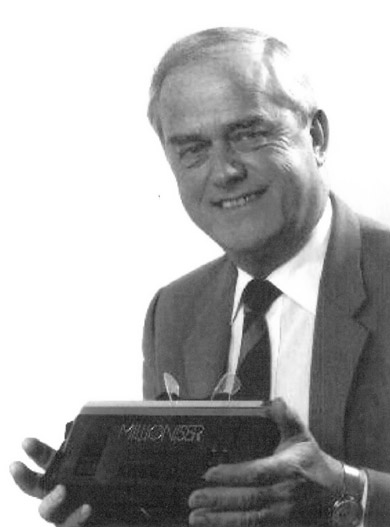
Image: Walt Miller
Take a look at the other pages. You will find many sound examples and more for download.